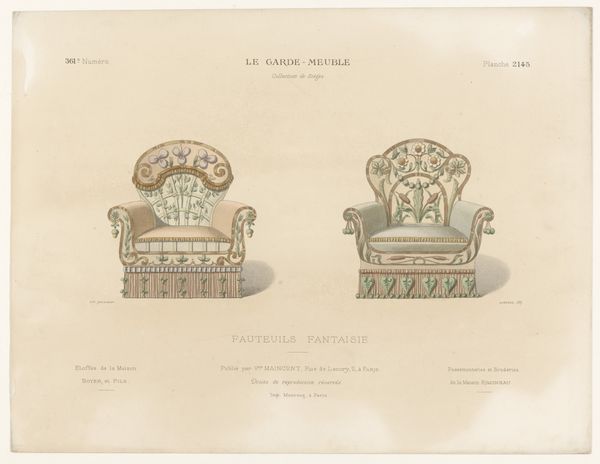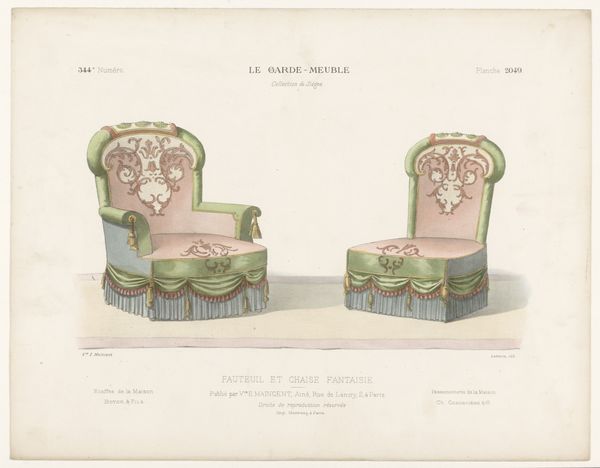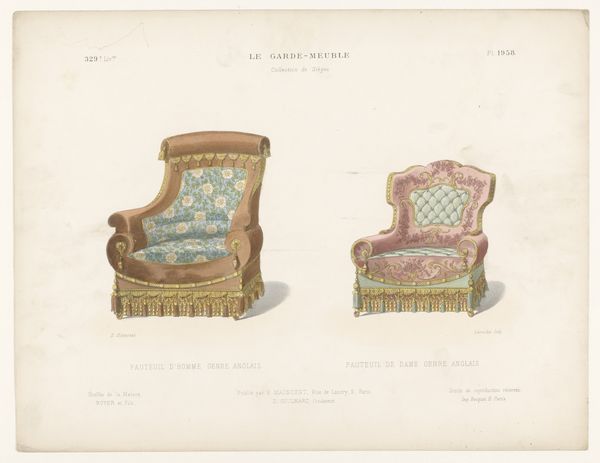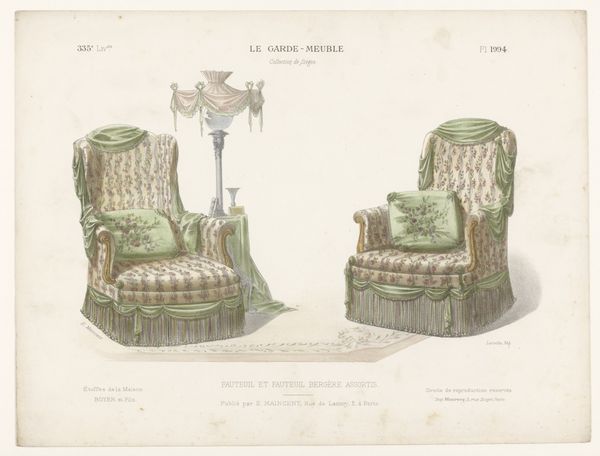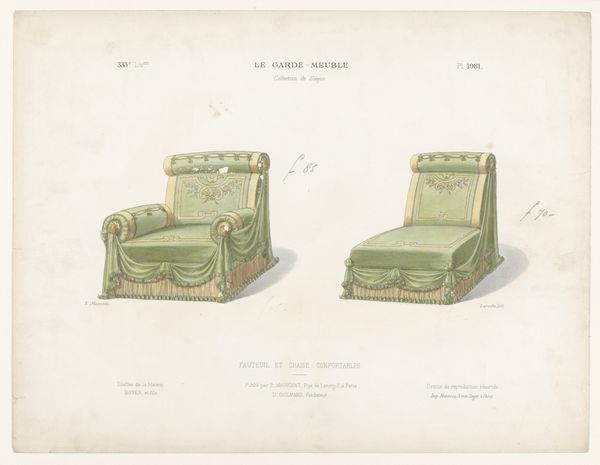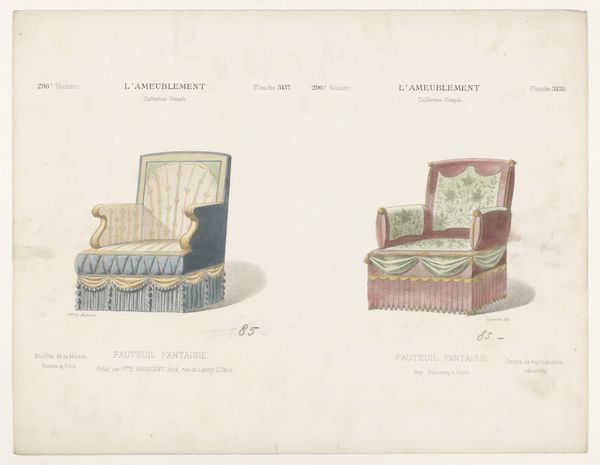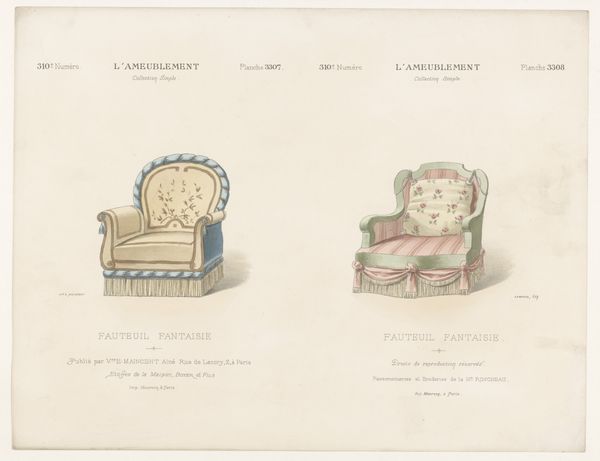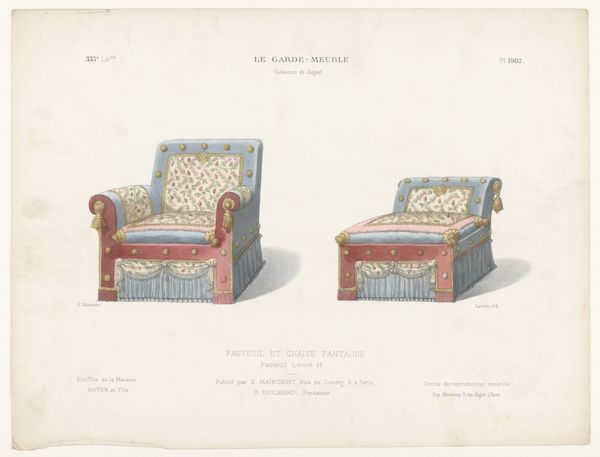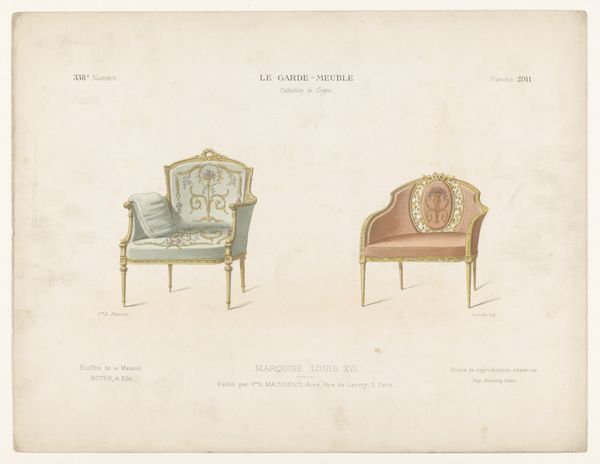
graphic-art, print, etching
#
graphic-art
# print
#
etching
Dimensions: height 268 mm, width 354 mm
Copyright: Rijks Museum: Open Domain
Curator: Looking at this print, "Fauteuil en stoel", I am struck by the craftsmanship it showcases. This etching, believed to be created between 1895 and 1935 by Léon Laroche, demonstrates the intricate detail that goes into the design of luxury furniture. The piece focuses on two chair designs upholstered in a style evocative of Louis XIV, featuring elaborate fringe and ornate patterns. Editor: My immediate impression is that these chairs look incredibly uncomfortable. Elegant, certainly, but hardly inviting. It's a very formal aesthetic. Curator: Indeed, these were objects designed more for show than comfort, serving as status symbols. What's compelling to me is how Laroche used etching—a traditionally 'high art' medium—to document and disseminate these designs. This raises questions about the social role of decorative arts. Who had access to these designs? Who could afford these chairs, and what statement did that purchase make? Editor: I see your point about social signalling, and I think the institutional context here is key. These prints were likely circulated among furniture makers and upholsterers as part of "Le Garde-Meuble," a publication detailing the national furniture collection. So we see how this style gets disseminated throughout society. The question is, how does something originally made for elites trickle down, changing form and meaning along the way? How accessible are these ideals to a larger portion of society and the labor involved in production? Curator: The politics of the image is very telling; it provides a glimpse into the visual culture and class aspirations of the time. By preserving and propagating the designs, they almost served as propaganda, celebrating French craftsmanship and perhaps subtly reinforcing the existing social hierarchy. Editor: Looking closely at the details, one could analyze the materials: the wood used for the frame, the fabric and how it would’ve been sourced and processed...even the dyes that gives the work its hue would speak to that period. Curator: So, in your view, by carefully dissecting material choices, you believe we can unpick historical details about resource management? I see the validity in this, a really interesting insight. Thank you. Editor: Likewise! Seeing art and design objects, and their accessibility to all parts of society, through multiple lenses adds fascinating nuances to our understanding of them.
Comments
No comments
Be the first to comment and join the conversation on the ultimate creative platform.

